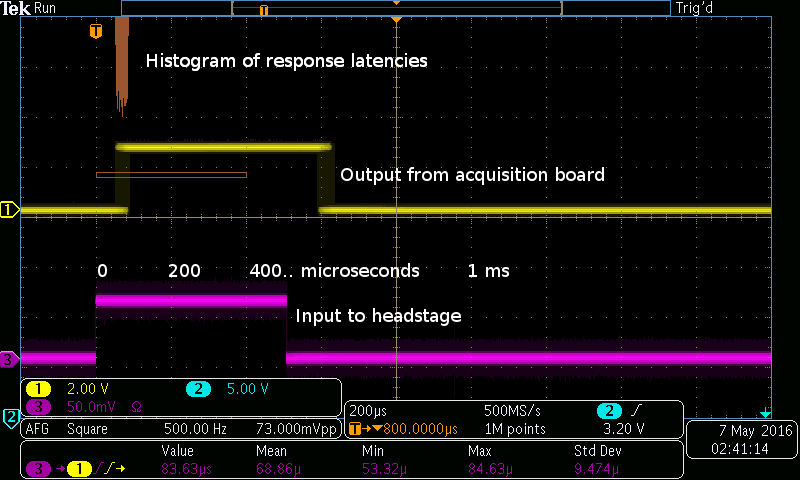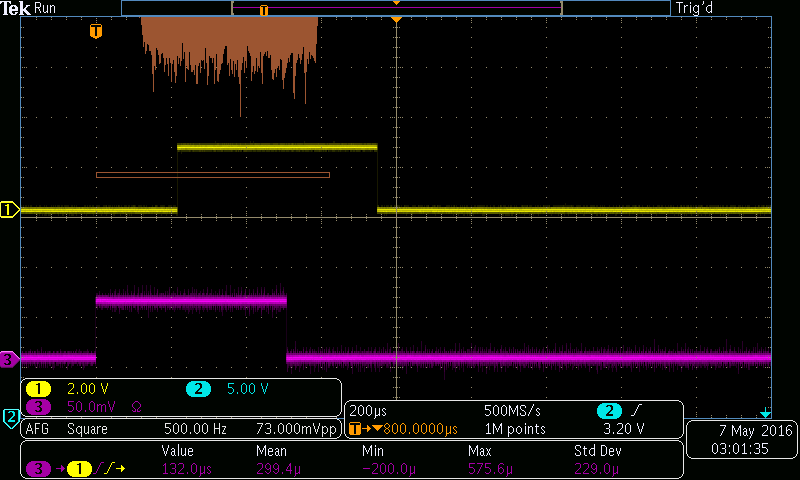lets use this page to archive some key information on the development of the prototype PCIe board.
The main github repo for this is (for now - we might move this later): https://github.com/open-ephys/next-gen-system
The interface specifications etc are on: PCIe acquisition board (Open Instruments) standard
Also see out slack channel at https://open-ephys.slack.com (email us to get an invite)
We're using a kintex 7 eval board (http://www.xilinx.com/products/boards-and-kits/kcu105.html)
with a custom FMC daughter card (https://github.com/open-ephys/next-gen-system/tree/master/FMC-board)
that provides
For testing we should aim to use the isolated pins, but we added non-isolated ones in case there's an issue with the isolation circuitry.
The FPGA <> FMC pinout is at https://docs.google.com/spreadsheets/d/18WfmbLGt8bGUUdksKp6AKA_wMX2SJ3Tndin-nnEgUCs/edit#gid=584734392
Test setup:
The main issue here is how to implement the intan <> GUI transfer via DMA.
Pro: Seems very easy to implement
Cons: closed, licensing likely not compatible with wide adoption
Measuring round-trip latencies from the open ephys GUI is problematic because of the latencies caused by the processing chain callback and buffer overheads.
For submillisecond feedback it makes more sense to just call the feedback function directly from the data acquisition thread, or in a separate thread that receives data directly from the DMA interface but is not subject to the timing and buffering requirement of the whole processing pipeline.
For testing, Aaron patched a simple threshold detector into the PCIe interface plugin in the Open Ephys GUI, to send a response output whenever the input voltage at the headstage is over a threshold. We ran these tests on a stock 16.04 Ubuntu system with an Intel core i7-3770K @ 3.5GHz.
For input buffer sizes (via Xillybus DMA interface) of 1 sample (33us) we get this:

When increasing the input buffer sizes, the min. latencies go up a bit, and an extra jitter of ~33us/sample (30kHz) is added:
it looks like none of this is necessary in practice though because the system should be able to handle required channel numbers even at this somewhat wasteful 1 sample buffer size.
2 samples/buffer:
16 samples/buffer (the min/mean/max are invalid here, the histogram is correct):